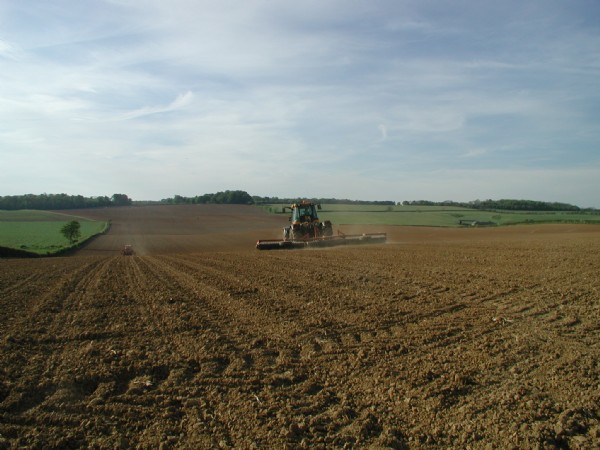

The late Robert Handy who farmed land at Andoversford, near Cheltenham, always said that there were three golden rules to observe when sowing grass seeds.
Roll, Roll, and Roll again!
This is essential advice for anyone about to sow grass leys or small seeds.
Intimate not Intermittent Contact
Placing small seeds in a cloddy or loose seedbed often results in failure. The objective when preparing a seedbed is to produce a fine, firm tilth which will enable the sown seeds to be in intimate contact with the soil particles.
The close proximity of the seeds to the soil will allow the movement of soil moisture to the seed - a prerequisite for germination.
Seedbed Preparation
Correctly timed cultivations are essential to produce a good seedbed. Soil that is either too wet or too dry will not submit to the most expensive cultivation machinery.
Once ploughed, or in the case of minimal cultivations, the seedbed should be worked from the top down. This ensures that clods are not brought to the surface where they will become difficult to break down. It is better to be patient and wait until soil conditions are right for cultivation rather than rush in an attempt to beat the weather. Later sown crops in better seedbeds, particulary in the spring, frequently show more vigour and suffer less with weeds and pests.
In addition to producing a fine seedbed the surface needs to be level. This is of particular importance where a drill is to be used for sowing
Drill or Broadcast?
Whether This is a simple matter of preference. Drilling usually ensures a consistent depth of placement which in the case of grass leys should be 10-15mm. This consistent depth is an advantage to the crop but the sowing depth will only remain consistant on a level surface. It is generally recommended that grass seed mixtures should be crossed drilled. The reason for this is to cover as much of the soil surface as possible to leave as little room for weeds. Broadcasting has the benefit of distributing seed more evenly so the emerging seedlings are more evenly spaced allowing the slower growing species such as white clover more chance of establishing. Drilling has the opposite effect of placing seeds more tightly together in rows which can lead to the strongr and shorter term species dominating. Effectively this means that longer term leys which often include more species should be broadcast.
by Ian Wilkinson of Cotswold Seeds
Date Posted: 30th March 2017




